Our Climate Response
Our Climate Response
■Materiality Analysis of Climate-related Risks and Opportunities
Through the analysis of domestic and international food and beverage manufacturers and distributors, Pulmuone has identified 24 material risks and opportunities based on the climate-related risk and opportunity issue pool recommended by the TCFD. Climate-related risks and opportunities were evaluated from short-term, medium-term, and long-term perspectives, considering the double materiality perspective. The evaluation was based on surveys to assess the financial impact and social and environmental impact. Furthermore, the risk range was evaluated by dividing it into upstream, downstream, and internal business locations within the value chain. The prioritized material climate-related risks and opportunities are integrated into the overall risk management process of the company.
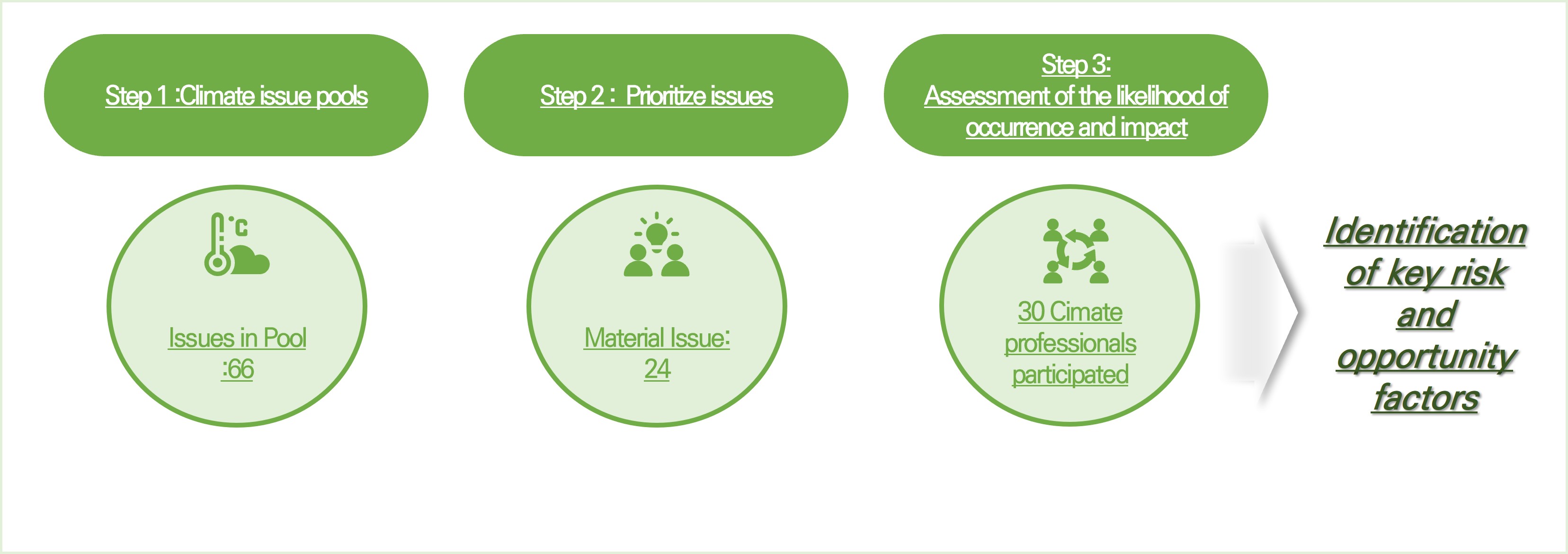
■Key Transition Risks and Opportunities Pool
Transition Risks:
Pulmuone's greenhouse gas emissions as of '22 are approximately 157,000 tCO2 for scope 1 and 2, and around 582,000 tCO2 for scope 3. Particularly within scope 3 emissions, Category 1 (purchased goods and services) accounts for about 90% of the total, indicating a significant risk.
-. Increased production costs and legal compliance costs related to carbon pricing and climate change regulations
-. Increased costs for compliance, operation, and management due to expanded disclosure and external reporting requirements
-. Increased costs for operation and management due to stricter environmental standards (regarding labeling and advertising)
-. Increased investment in renewable energy leading to higher energy costs
-. Increased CAPEX associated with the adoption of carbon reduction technologies
-. Increased research and development costs for innovative and alternative technologies
-. Increased reputation management costs due to rising expectations from investors, civil society, and customers
Opportunities:
Consumer values and preferences are influencing the food industry, with carbon reduction being one of the criteria for value-based consumption. There is ongoing research on the lower carbon emissions of plant-based ingredients and cultured meats compared to animal-based ingredients.
-. Cost savings through the application of eco-friendly production processes
-. Market expansion and cost savings through mandatory regulations on the use of recycled materials as raw materials
-. Carbon emission and cost reduction in logistics vehicles and transportation
-. Cost savings through tax incentives and various incentives
-. Increased sales
-. Additional revenue from proactive investment for securing a stable supply of renewable energy sources
-. Increased sales due to the growing consumer preference for plant-based and eco-friendly foods
-. Cost savings through the use of smart farming and other food production, operation, and management solutions
■Scenario Analysis
Pulmuone continuously monitors the latest conditions for updates, refreshing our climate scenario assumptions, expanding the scope of risk analysis, and continually deepening our understanding. In 2023, we conducted additional scenario analysis based on NGFS scenarios. We have conducted climate change scenario analysis to enhance our understanding of the medium to long-term impacts of climate change risk and opportunity factors on our business. Based on scenarios set by the Network for Greening the Financial System (NGFS), we evaluated the risks associated with our business areas where climate change impacts are expected to be significant, including the negative tofu factory, Yongin logistics center, and Muju dairy production facility.
To achieve this, we compared and analyzed two scenarios: the 3°C scenario, assuming that national emission reduction targets (Nationally Determined Contributions or NDCs) will be met by 2050, and the proactive 1.5°C scenario (Orderly Net Zero 2050) aiming for carbon neutrality by 2050. This analysis is aimed at strengthening our understanding of the medium to long-term impacts of climate change risk and opportunity factors on our business.
■ NGFS Scenarios
The Network for Greening the Financial System (NGFS) classifies the implementation of a low-carbon economy into three categories: orderly transition, disorderly transition, and business as usual. For each category, NGFS presents six scenarios, combining two scenarios that aim to limit global average temperature rise to within 1.5-2.0℃, and another two scenarios that focus on achieving temperature rise below 1.5℃.
Pulmuone considers the NGFS scenario of an orderly transition to achieve carbon neutrality by 2050 (1.5℃ scenario) and measures transition risks and opportunities accordingly. Additionally, Pulmuone adopts the 1.5℃ Remind NGFS Orderly (2050), 3℃ Remind NGFS NDC (2050) to assess the physical risks at its key operational sites.
Physical Risks
Through the analysis of MSCI Climate VAR, Pulmuone has identified the common key risk factors at its operational sites as 'heatwaves', 'extreme cold', 'heavy rainfall', and 'typhoons'. Additionally, 'flooding' and 'wildfires' have been recognized as risks requiring continuous monitoring.
[Assessment of Physical Risks for Key Facilities and Supply Chains]
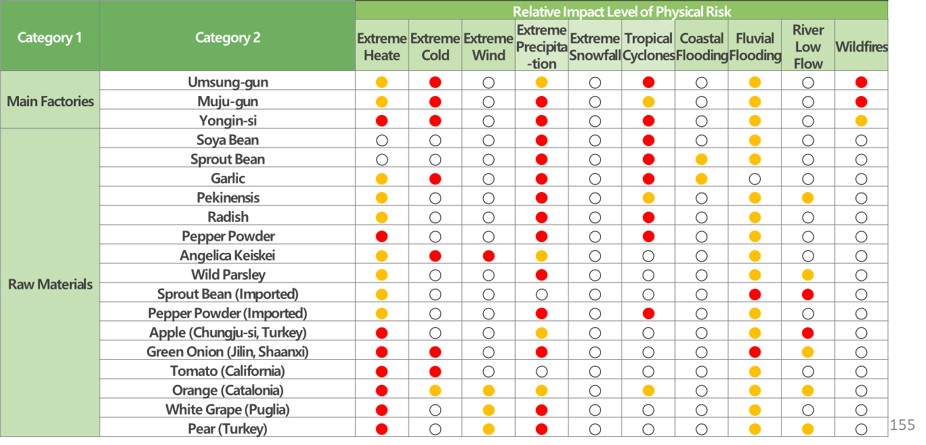
[Case Study] Potential Financial Impacts of Physical Risk Analysis for Yongin-si Plant
Major Physical Risks : Extreme Heat, Extreme Cold, Heavy Rainfall, Cyclones, Wild fires
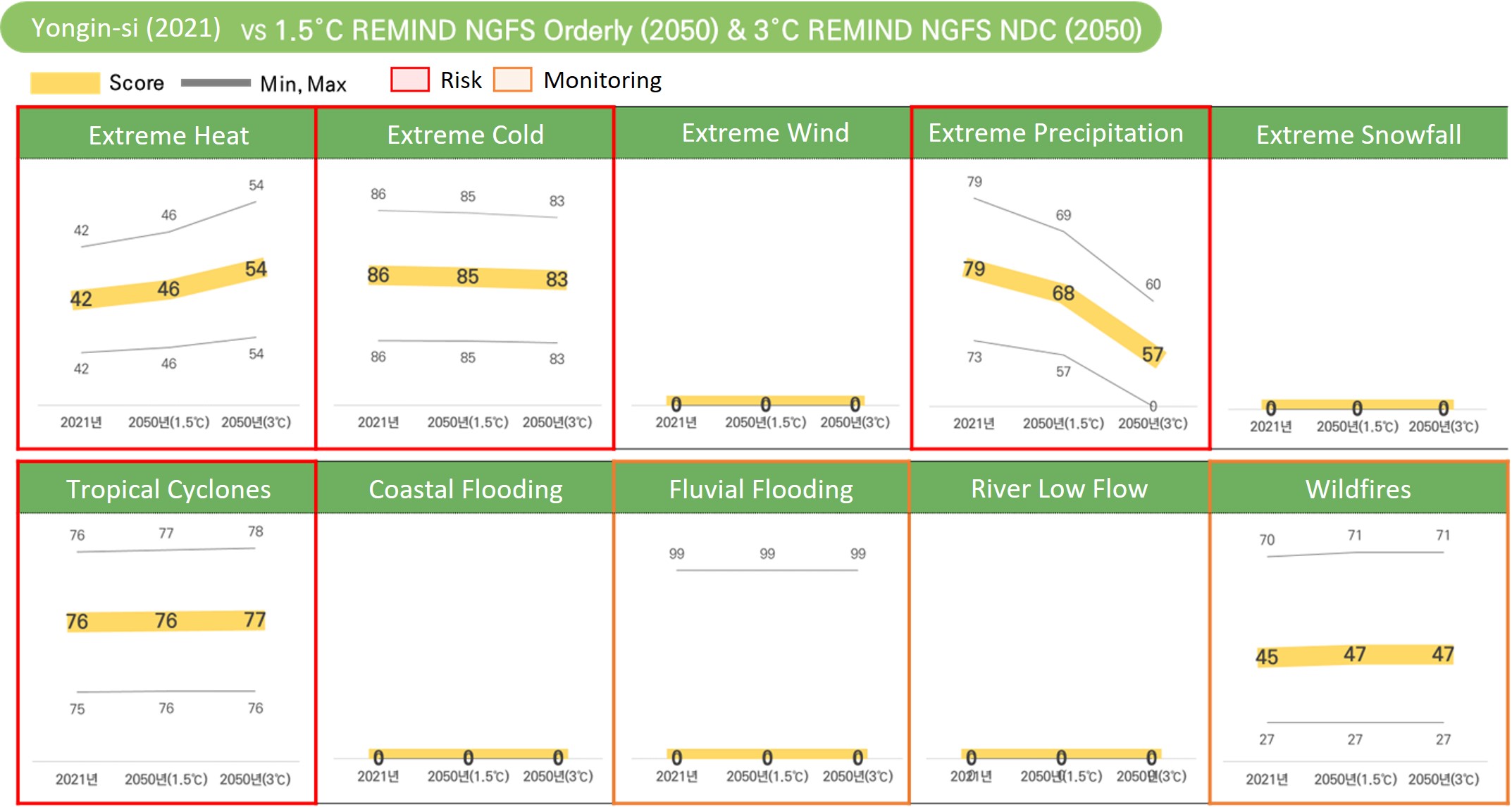
*Detailed information will be released at a later date.
■ Net Zero Implementation Measures
For Pulmuone, electricity usage accounts for the largest portion of emissions in both Scope 1 and Scope 2. In the domestic context, as of '22, 75% of Scope 1 & 2 emissions were generated from electricity and boiler fuels. In response, Pulmuone prioritizes the following reduction measures: Transitioning to renewable energy for electricity consumption. Switching to low-carbon fuel sources such as biomass and green hydrogen for LNG and LPG boiler fuels, which account for a significant portion of Scope 1 emissions.
By implementing these measures, Pulmuone aims to achieve substantial emissions reductions and progress towards its 2050 net-zero goals
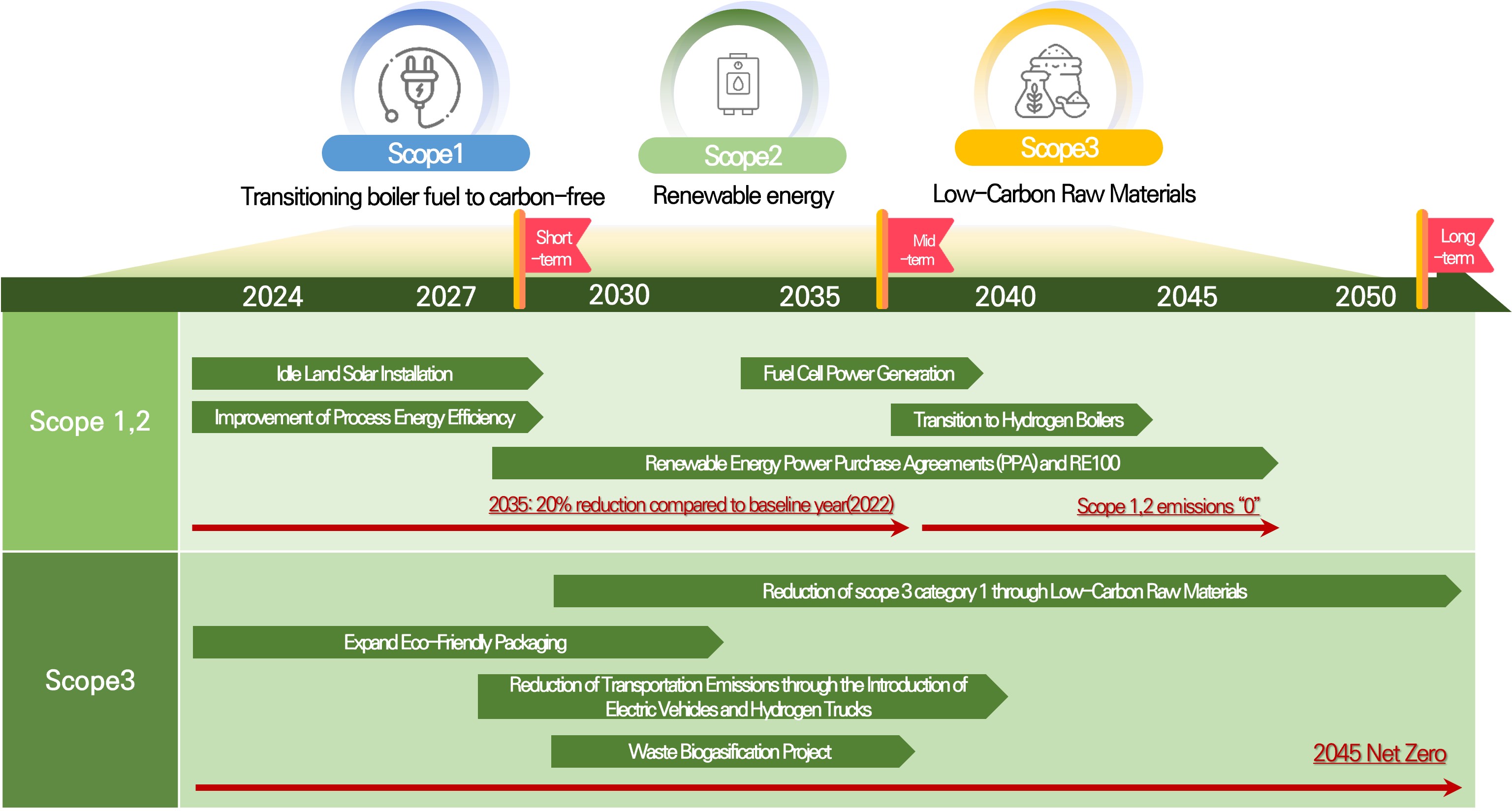
■ Net Zero Roadmap
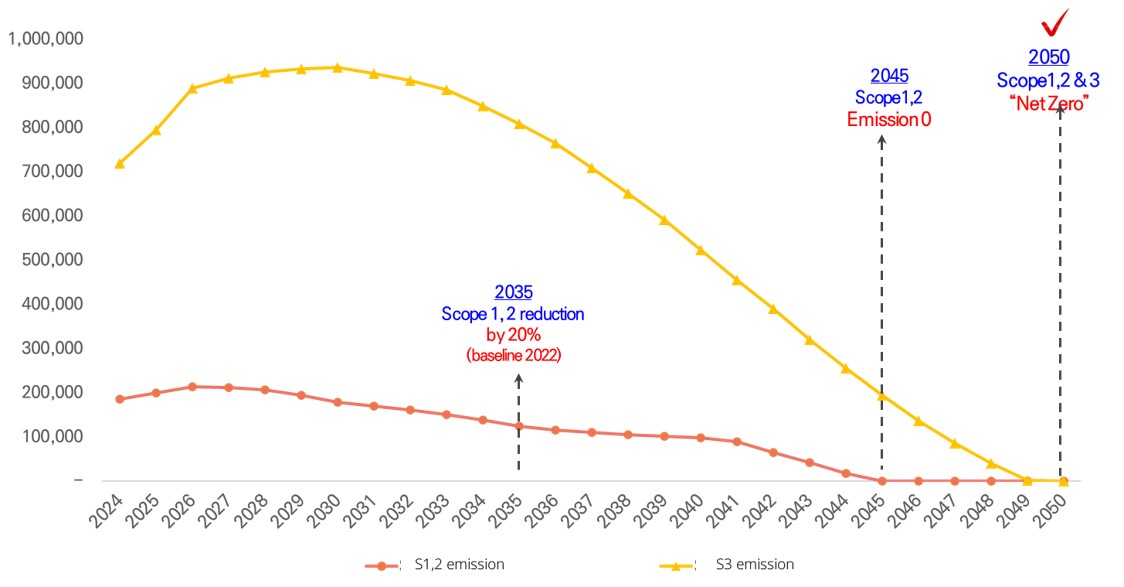
Pulmuone's greenhouse gas emissions as of 2022, based on Scope 1 and 2, total approximately 157,473 tCO2, while Scope 3 emissions amount to about 580,756 tCO2. To actively participate in the global movement addressing the risks and opportunities of climate change, we have established a concrete roadmap and implementation plan to achieve carbon neutrality by 2050, including our operations and supply chain. Additionally, we have set short-term, medium-term, and long-term target milestones for greenhouse gas reduction activities, with the years 2027, 2035, and 2050 respectively.
- Scope 1 & 2:
-. Scope 1+2 Emissions(Baseline: 2022) 157,473 tCO2e,
-. 20% reduction by 2035 compared to 2022
-. Achieve zero (0) emissions by 2045.
- Scope 3:
-. Scope 3 Emissions(Baseline: 2022) Scope 3: 580,756 tCO2e
-. Achieve net-zero emissions for Scope 3 activities by 2050. (Net-zero across the entire value chain)









